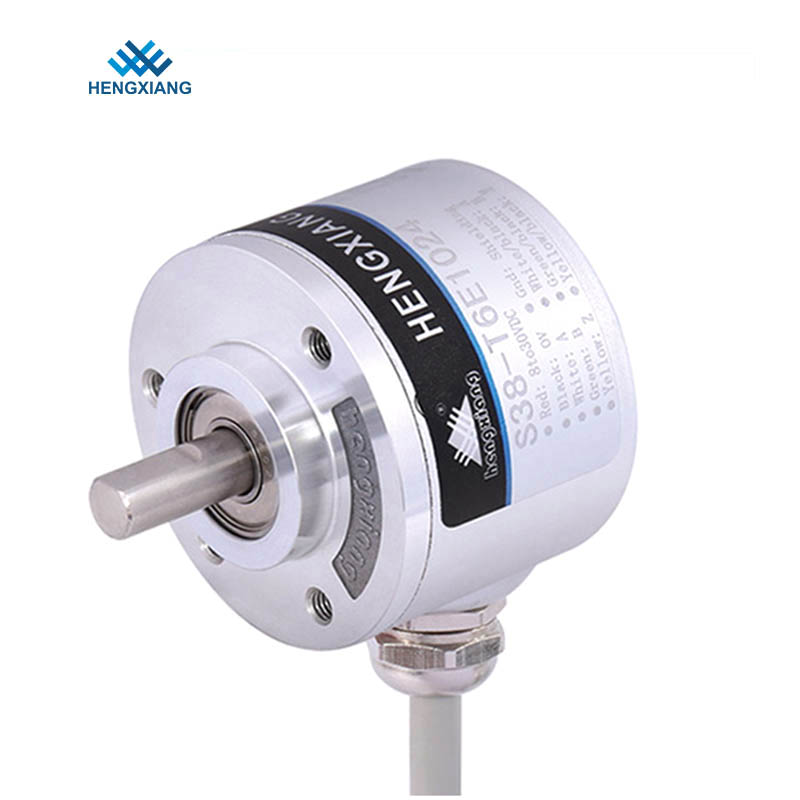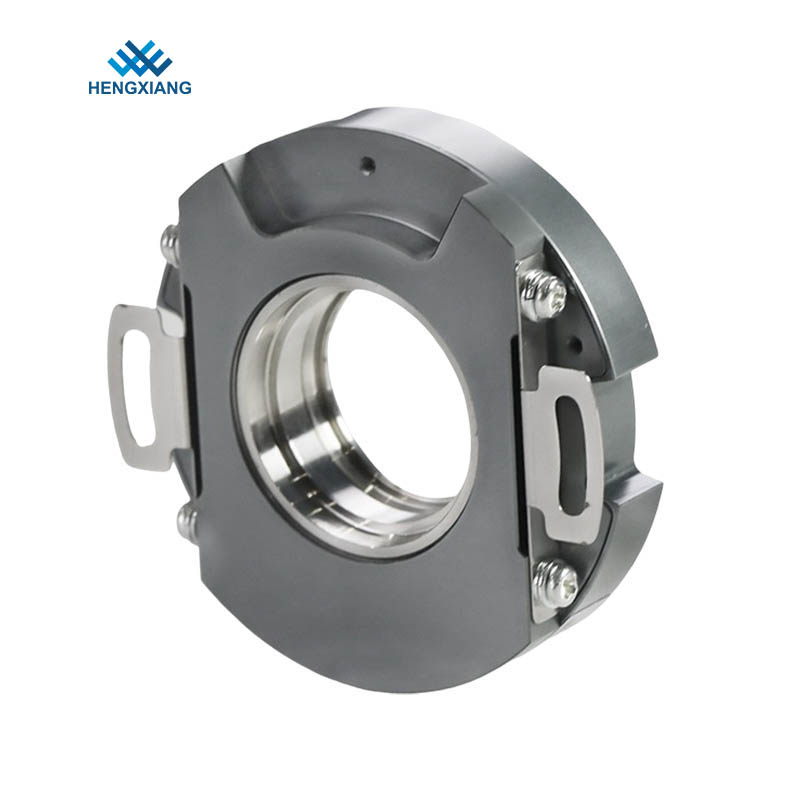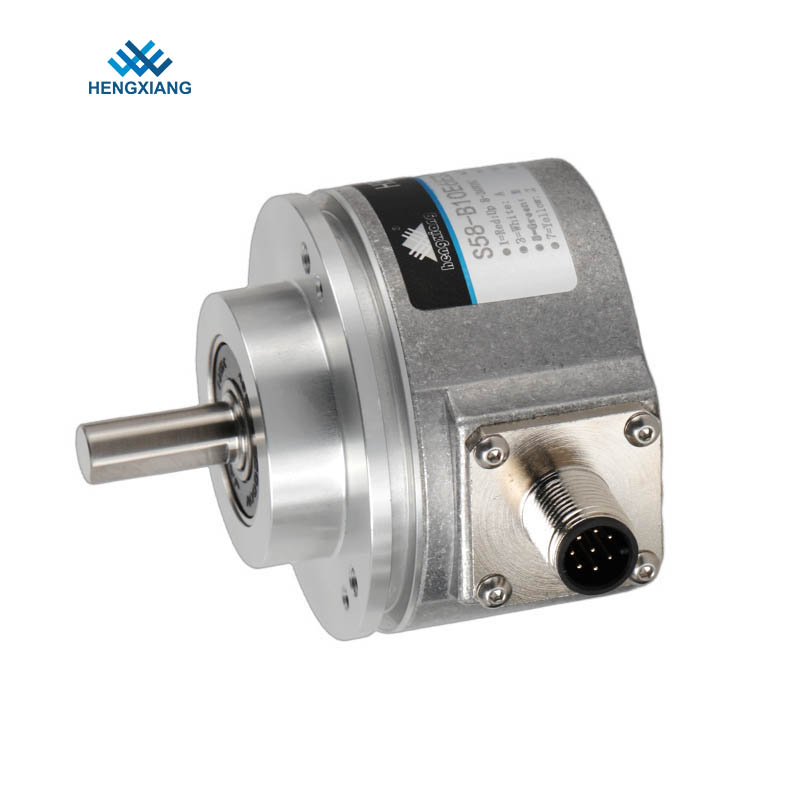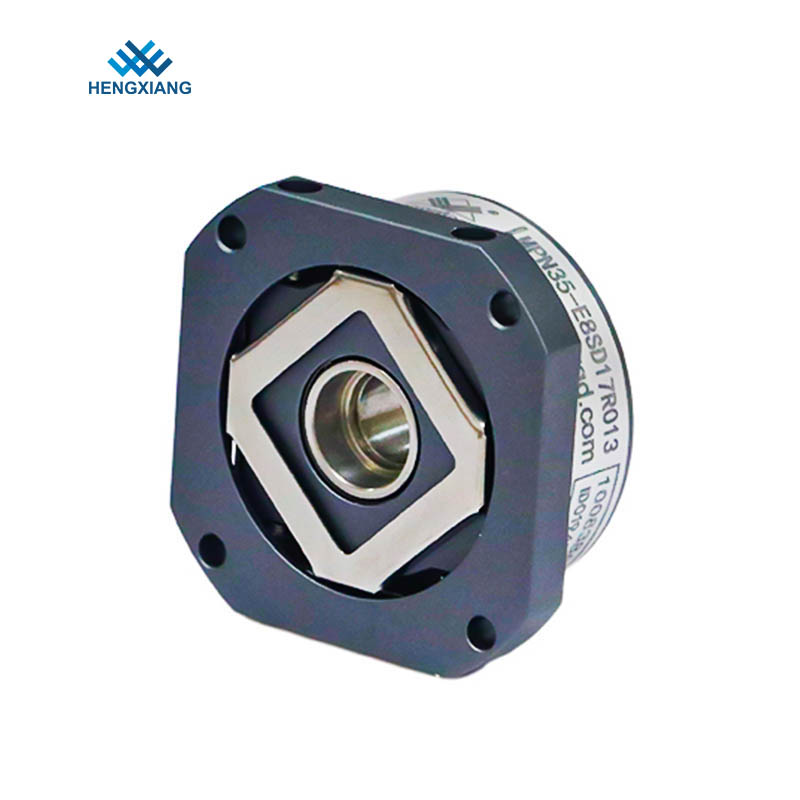How do incremental optical encoders adapt to the complex power supply fluctuations found in industrial sites through a wide voltage input design?
Release Time : 2025-10-16
In modern industrial automation systems, incremental optical encoders perform the critical task of detecting speed, position, and direction of movement in real time. The A, B, and Z three-phase signals they output are the foundation for precise closed-loop control in the control system. However, the power supply environment in industrial sites is often complex and volatile. Issues such as grid voltage fluctuations, transient voltage drops caused by equipment startup and shutdown, voltage attenuation caused by long wiring runs, and even incorrect power polarity can affect encoder operation, leading to signal distortion, communication interruptions, and equipment damage. Incremental optical encoders generally utilize a wide voltage input design, combined with reverse polarity protection, short-circuit protection, and a variety of electrical interfaces, to create a highly reliable power supply and signal transmission system, ensuring stable operation under harsh operating conditions.
1. Wide Voltage Input: Compatible with Multiple Power Supplies for Enhanced Adaptability
Traditional encoders typically use a fixed voltage power supply, requiring extremely high power supply stability. Modern incremental optical encoders, on the other hand, generally support a wide input voltage range, such as 5–30V DC, or even wider. The core advantage of this design lies in its integrated, highly efficient DC-DC voltage regulator. Regardless of wide fluctuations in the external input voltage, the regulator converts it into a stable operating voltage required by the encoder's optoelectronic devices and signal processing chips. This ensures the encoder remains operational despite voltage drops or minor overvoltage conditions, significantly enhancing the system's robustness in complex industrial environments.
2. Reverse Polarity Protection: Preventing Human Wiring Errors
During equipment installation or maintenance, operators may inadvertently connect the power supply with the wrong polarity, potentially damaging common electronic components. To mitigate this risk, incremental encoders integrate reverse polarity protection at the power input, typically using a diode or MOSFET. When the power supply polarity is reversed, the protection circuit automatically shuts off the current flow into the encoder, preventing damage to key components. This design significantly reduces equipment failures caused by human error and improves the safety and convenience of on-site maintenance.
3. Short-Circuit Protection: Addressing Output Abnormalities
The encoder's signal output lines may short-circuit during wiring due to insulation damage, loose connectors, or external interference, resulting in an abnormally high output current. To address this, the encoder's output driver circuit has built-in short-circuit protection. When a short to ground or power is detected on the output terminal, the protection circuit automatically limits the current or cuts off the output to prevent overheating and damage to the internal driver chip. Once the fault is resolved, the encoder automatically resumes operation without the need for replacement, ensuring continuous system operation.
4. Multiple Electrical Interfaces: Flexible Compatibility with Control Systems
To accommodate the input requirements of diverse control devices, incremental encoders offer a variety of electrical interface options, including push-pull output, line driver, and open collector. Push-pull output offers strong compatibility and is suitable for most PLCs and controllers. Line driver supports long-distance, highly interference-resistant signal transmission and is commonly used in servo systems. Open collector facilitates level conversion. Users can flexibly select the interface based on their specific application to ensure stable signal input.
5. Non-contact photoelectric principle and mechanical design ensure signal purity
High-end encoders such as the PN58 utilize a non-contact photoelectric detection principle. This eliminates physical friction between the light source and the grating disk, preventing signal drift caused by mechanical wear. Its dual-bearing, large-aperture, ultra-thin design and through-axis concentric locking mechanism ensure high concentricity between the rotating shaft and the encoder body, reducing signal jitter caused by axial play or eccentricity. A spring-plate mounting structure further absorbs vibration and enhances stability. The IP50 protection rating effectively prevents dust from entering the optical path, ensuring long-term signal reliability.
In summary, the incremental optical encoder incorporates a comprehensive electrical safety and adaptability system through a wide voltage range, reverse polarity protection, short-circuit protection, and diverse electrical interfaces. It not only protects itself from abnormal operating conditions such as voltage fluctuations and wiring errors, but also provides stable, high-precision signal output in confined spaces, vibrating environments, and over long transmission distances, making it an indispensable "sensing hub" in industrial automation systems.
1. Wide Voltage Input: Compatible with Multiple Power Supplies for Enhanced Adaptability
Traditional encoders typically use a fixed voltage power supply, requiring extremely high power supply stability. Modern incremental optical encoders, on the other hand, generally support a wide input voltage range, such as 5–30V DC, or even wider. The core advantage of this design lies in its integrated, highly efficient DC-DC voltage regulator. Regardless of wide fluctuations in the external input voltage, the regulator converts it into a stable operating voltage required by the encoder's optoelectronic devices and signal processing chips. This ensures the encoder remains operational despite voltage drops or minor overvoltage conditions, significantly enhancing the system's robustness in complex industrial environments.
2. Reverse Polarity Protection: Preventing Human Wiring Errors
During equipment installation or maintenance, operators may inadvertently connect the power supply with the wrong polarity, potentially damaging common electronic components. To mitigate this risk, incremental encoders integrate reverse polarity protection at the power input, typically using a diode or MOSFET. When the power supply polarity is reversed, the protection circuit automatically shuts off the current flow into the encoder, preventing damage to key components. This design significantly reduces equipment failures caused by human error and improves the safety and convenience of on-site maintenance.
3. Short-Circuit Protection: Addressing Output Abnormalities
The encoder's signal output lines may short-circuit during wiring due to insulation damage, loose connectors, or external interference, resulting in an abnormally high output current. To address this, the encoder's output driver circuit has built-in short-circuit protection. When a short to ground or power is detected on the output terminal, the protection circuit automatically limits the current or cuts off the output to prevent overheating and damage to the internal driver chip. Once the fault is resolved, the encoder automatically resumes operation without the need for replacement, ensuring continuous system operation.
4. Multiple Electrical Interfaces: Flexible Compatibility with Control Systems
To accommodate the input requirements of diverse control devices, incremental encoders offer a variety of electrical interface options, including push-pull output, line driver, and open collector. Push-pull output offers strong compatibility and is suitable for most PLCs and controllers. Line driver supports long-distance, highly interference-resistant signal transmission and is commonly used in servo systems. Open collector facilitates level conversion. Users can flexibly select the interface based on their specific application to ensure stable signal input.
5. Non-contact photoelectric principle and mechanical design ensure signal purity
High-end encoders such as the PN58 utilize a non-contact photoelectric detection principle. This eliminates physical friction between the light source and the grating disk, preventing signal drift caused by mechanical wear. Its dual-bearing, large-aperture, ultra-thin design and through-axis concentric locking mechanism ensure high concentricity between the rotating shaft and the encoder body, reducing signal jitter caused by axial play or eccentricity. A spring-plate mounting structure further absorbs vibration and enhances stability. The IP50 protection rating effectively prevents dust from entering the optical path, ensuring long-term signal reliability.
In summary, the incremental optical encoder incorporates a comprehensive electrical safety and adaptability system through a wide voltage range, reverse polarity protection, short-circuit protection, and diverse electrical interfaces. It not only protects itself from abnormal operating conditions such as voltage fluctuations and wiring errors, but also provides stable, high-precision signal output in confined spaces, vibrating environments, and over long transmission distances, making it an indispensable "sensing hub" in industrial automation systems.







